Trust me on this – a good grinder is to coffee what a good set of speakers is to music. It’s absolutely crucial.
I have tested more than 50 different grinders over the last five years. In this article, I try to summarize the best models on the market and explain who they are for and what they excel at.
Grinder Q & A
Here’s a small interview I did with myself, so you can save time and find the right grinder that suits your needs in a hurry 😉
Q: What is the best budget-friendly coffee grinder?
A: There are many affordable options in this article. The Timemore C2 is the cheapest, and it’s a great grinder for the money. However, in terms of pure value, the DF54 offers an incredible amount of performance for its price. The Baratza Encore ESP is also a solid all-rounder since it can grind for everything and the price is still reasonable.
Q: Which grinder is the most capable for filter coffee?
A: The 1Zpresso K-Ultra is a very capable and excellent grinder for filter coffee. The DF54 is also really underrated for pour over. I don’t know why people don’t talk more it more. The Fellow Ode Gen 2 is another excellent choice for filter coffee. Lastly, the Femobook A4Z is also extremely capable, especially if you’re into light roasts and flavor clarity.
Q: What would you recommend for espresso grinding?
A: Many grinders in this article can also grind for espresso. If you are on a budget, the DF54 is a really good espresso grinder. The 1Zpresso K-Ultra can also be used for espresso, but manual grinding for espresso can be tough in the long run. The Baratza Sette 30 is another good grinder for the money when it comes to espresso, although it is a bit noisier and more plasticky. For those willing to spend more, the Timemore Sculptor 064s and the DF64 Gen 2 are getting closer to a prosumer level and offer excellent performance.
Q: If budget is not a concern, which grinder would you recommend?
A: If budget is not a concern, the DF64 Gen 2 is really well built, and you have the option to add SSP burrs or other third-party burrs to customize the flavor profile. The same goes for the Timemore 064S and the DF64V. Getting into the 64mm flat burr category with grinders that can easily switch burrs is ideal for hardcore coffee geeks.
Q: What about a grinder for travel or manual grinding?
A: For travel or manual grinding, there are many great manual grinders. Check out my dedicated post about them here. The 1Zpresso K-Ultra is excellent, and most grinders from 1Zpresso offer a lot of value for the money. The Timemore S3 is a very beautiful grinder, and the Timemore C2 remains a very solid option for budget-conscious people. The C2 is also a bit smaller than the other options, which can be an advantage for travel.
How to choose a home coffee grinder
Grinders come in all shapes and sizes, so it’s important to choose one that fits your brewing style.
Broadly speaking, grinders can be broken down into 4 main categories – however, there are exceptions to these rules:
In reality, most people reading this are primarily looking for a grinder they can use at home to brew stuff like drip coffee or French press.
- Electric Conical Burr Grinders: Most people just getting into the whole ‘grind-your-beans-at-home’-thing, should pick a model from this category. It should have conical burrs made of steel and it shouldn’t necessarily cost a fortune.
- Electric Flat Burr grinders: This type of grinder is too expensive for most regular people, but many hardcore coffee geeks eventually invest in a flat burr grinder due to its more uniform particle distribution. Both when it comes to drip coffee and espresso, flat burrs tend to provide more flavor clarity.
- Espresso Grinders: These grinders are usually a lot more expensive, and only suitable for one thing: espresso. They can grind extremely fine, and are designed specifically for espresso. Even, if they technically can grind the correct coarseness for other brewing types, they are better suited for their original purpose. You can find them with either flat or conical burrs. Read my guide specifically to espresso grinders here.
- Manual Grinders: You can often find great value in this category! Due to their elongated design, hand grinders usually have conical burrs, (although I can think of two or three exceptions to this rule).
Cheaper versions usually have dull, ceramic burrs, but the best manual coffee grinders tend to have high-quality steel parts. Hand grinders are versatile and can often be suitable for both pour over and espresso.
- Single-dose grinders: This type of grinder has become really popular in the last couple of years. A single-doser doesn’t have a big hopper, where you can store your beans. Instead, they have a small grind chamber that is designed for a single dose. So you have to measure out your desired dose before grinding each time. This is usually combined with very low retention. This approach is ideal if you want the purest and freshest flavors possible.
(Pro tip: When we talk about single-dosers, we typically refer to electric grinders, but essentially, all hand grinders are single-dose grinders!) - Commercial grinders: In the coffee shop you’ll mainly see huge grinders with flat or conical burrs. They are designed for volume and workflow. Often, they are also more consistent than the grinders home-users have access to, however, this isn’t always the case. Today, some prosumer grinders can actually rival professional equipment.
Expertise & Credentials?
- Asser Christensen earned his Q Grader license (certified coffee quality grader) in 2018, with recertification in 2021.
- The Q Grader exam requires passing rigorous blind tasting cupping protocols, as well as tests for identifying green bean and roasting defects.
- He has served as a sensory judge at roasting and coffee brewing competitions.
- Over the last 5 years, he has tested more than 50 different coffee grinders, as documented on this blog and his YouTube channel.
Consider a manual grinder
Alternatively, if you don’t mind the work, you’ll also get excellent results with a manual grinder. If you’re serious about coffee and want the ultimate bang-for-the-buck solution then get the 1Zpresso Jx.
(Yes, flavor-wise, it’s a big step up compared to the Baratza Encore.)
If you have more complicated coffee needs than typical home brewing, you might have to consider an espresso grinder. If you have an espresso machine – or you’re thinking about getting one – you should plan ahead and get a device meant for this kind of brewing style since normal grinders typically can’t grind fine enough for espresso.
🤔 Grinding for both drip & espresso?
One of the most common questions I get asked by prospective coffee snobs is this:
I want a grinder that can grind for both espresso as well as pour over. Which one should I get?
Most entry-level grinders are designed with French press and drip coffee in mind. They usually don’t go fine enough to grind for espresso, or maybe they lack adjustability in the finer range (which is really important).
If you want to do espresso well, you’ll need a dedicated espresso grinder. It’s pretty hard work to dial in a grinder, and find the perfect setting for espresso. Once you find that sweet spot, you don’t want to mess with it and start brewing French press or pour over. For that reason, most espresso snobs tend to have a dedicated espresso grinder.
There are only a few grinders that can do both drip and espresso well. Modern single-dose grinders such as the DF64 Gen 2 (mentioned below) are designed to have minimal retention and large adjustment dials that are easy to move back and forth. For that reason, they function well as multipurpose grinders. Keep in mind, that this type of grinder doesn’t have a hopper, so you’ll have to refill beans every time you brew coffee.
The Top burr coffee grinders of 2024
Below you will find my recommendations in a wide range of categories. These grinders shouldn’t be compared side by side. Instead, they should be seen as models that cater to specific segments of the market.
I’m sure one of them will fit your particular needs – good luck.
1: DF54 (ESPRESSO/FILTER)
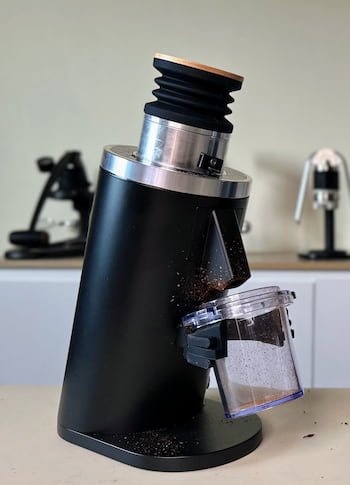
The DF54 is a game-changer in the mid-range grinder market, offering near-professional level performance at a price point that’s accessible to serious home enthusiasts. It’s part of the new wave of Chinese-made DF-grinders that have disrupted the traditional coffee equipment landscape.
Unlike many grinders in its price range that excel at either espresso or filter coffee, the DF54 is a true all-rounder. It holds its own against more expensive espresso grinders while surprisingly outperforming even filter-focused flat burr grinders. For instance, I think it’s better than the Wilfa Uniform, which was seen as an outstanding pour over option just a few years back.
The DF54’s build quality punches above its weight class, featuring an aluminum body and powder-coated finish that rivals more expensive models. This solid construction contributes to its relatively quiet operation, a notable improvement over plastic-bodied competitors, such as the Baratza Encore ESP.
With its 54mm flat burrs and innovative design, the DF54 produces impressive results across the brewing spectrum. For pour-over, it delivers the clarity and complexity typically associated with higher-end grinders. In espresso, it handles everything from light to dark roasts with ease, offering the kind of consistency and range usually found in more expensive machines.
The grinder’s low retention and anti-static features make it ideal for the modern home barista who likes to experiment with different beans and brewing methods. I have seen some users complain about clogging and problems with static cling, but in my testing period (around 6 months) I haven’t noticed any big issues here.
While it may lack the long-standing reputation and extensive support network of more established brands, the DF54 represents the cutting edge of accessible, high-performance home grinding.
Pros:
- Professional-level performance for both espresso and filter
- Excellent build quality for its price range
- Ideal for single-dosing and experimentation
- Great value in the sub-$300 category
Cons:
- Newer brand with less established support infrastructure
- Limited burr options in the 54 mm size. DF64 would be better for experimentation/upgrading.
The DF54 is a testament to how far home coffee equipment has come, offering capabilities that were once the domain of commercial grinders. For the price it’s no-brainer.
miicoffee Amazon2: BARATZA ENCORE & ENCORE ESP (FILTER/ESPRESSO)
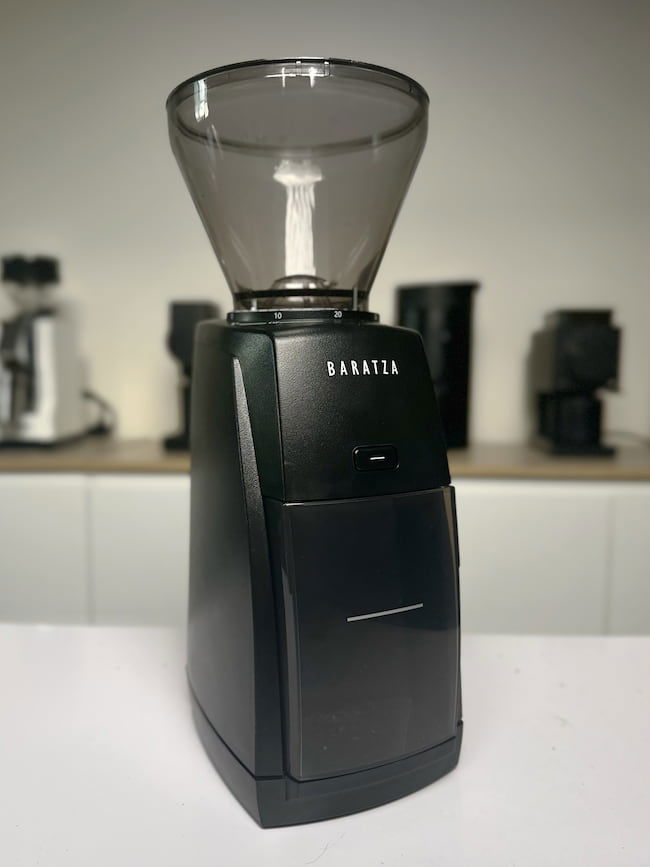
Baratza’s Encore line has long been the go-to entry-level electric grinder for home brewers. The original Encore remains a solid choice for filter coffee enthusiasts, while the new “ESP” version expands its capabilities to include espresso.
The classic Encore:
- Reliable workhorse for filter coffee methods
- Consistent grind at pour-over settings
- Simple, no-frills operation
- Affordable entry point into quality grinding
However, it lacks true espresso capabilities and can feel inconsistent with lighter roasts.
Enter the Encore ESP: For about $50 more, you get significant upgrades:
- Dual-range adjustment system (20 clicks for espresso, 20 for filter)
- M2 burr set for improved consistency and flavor clarity
- Capable of grinding for both filter and entry-level espresso
The ESP addresses the original’s main limitation by introducing espresso grinding. It performs well with darker roasts but may struggle with lighter, more demanding beans for espresso.
Both models share:
- Primarily plastic construction (feels a bit cheap)
- User-friendly design
- Baratza’s renowned customer support (especially in the US)
For filter coffee lovers, the original Encore remains a decent choice. However, if you’re interested in exploring espresso or want improved grind quality across the board, the ESP offers considerably more value for a modest price increase. If you’re interested in the Encore, I think it’s a no-brainer to go for the Encore ESP instead. Here are some features it offers:
- Versatile: handles both filter and espresso grinding
- Improved M2 burr set – better flavors for pour over
- Only slightly more expensive than the original
While hardcore coffee geeks might eventually outgrow either model, the Encore ESP represents an excellent starting point for budding enthusiasts looking to explore both filter and espresso brewing.
Amazon Seattle Coffee Gear3: TIMEMORE SCULPTOR 064S (ESPRESSO/FILTER)
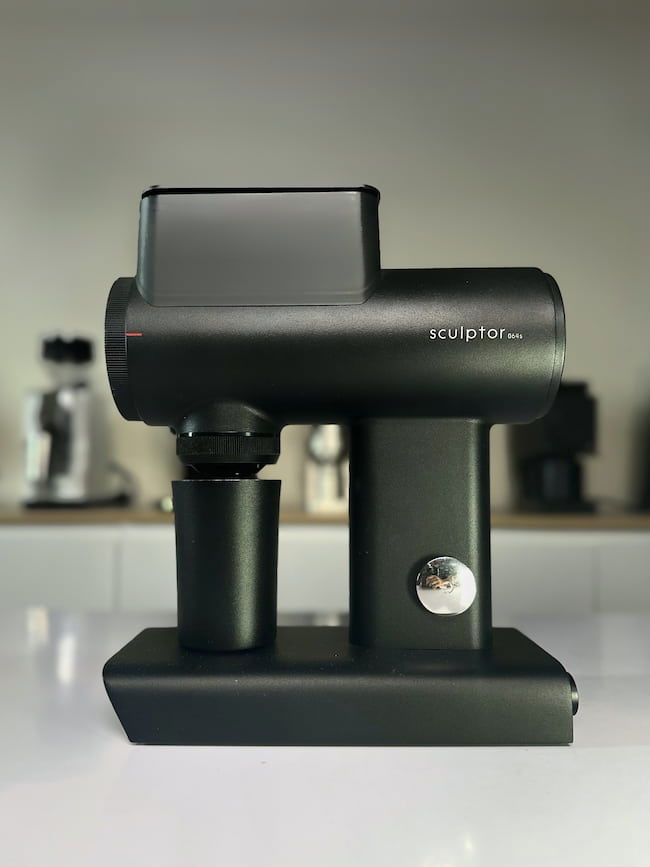
When I first unboxed the Timemore Sculptor 064s, I was pleasantly surprised: This grinder looks and feels more refined than most other grinders on the market. It’s very small. But at the same time feels sturdy and powerful with it’s robust frame.
The 064s represents a significant leap in the mid-range grinder market. It’s part of a new wave of Chinese-made grinders disrupting the industry, and Timemore isn’t shy about it – they proudly stamp “Made in China” under the catch cup.
The 064s is mostly focused on espresso. It produces shots with enhanced sweetness and a well-rounded profile. But it also makes relatively enjoyable filter coffee, though hardcore light roast fans might still prefer a high-end hand grinder like the 1Zpresso K-Ultra for pour-over.
The magnetic catch cup, rotational fines knocker, and adjustable RPM (800-1200) all contribute to a smooth workflow. It’s also one of the quietest grinders I’ve used, thanks to its brushless motor.
Build quality is excellent, with a sleek design that looks more sophisticated than competitors like the DF64 or Fellow Ode. The 64mm flat burrs, deliver consistent grinds across brewing methods, but it is possible to upgrade the grinder with third party burrs (from SSP for example).
There are minor quirks, however. Some beans don’t slide into the burrs as smoothly as they should, due to the shallow angle of the single dose hopper, reminiscent of issues with the Fellow Ode. But overall, the user experience is phenomenal. It’s just a nimble and capable product.
Even though, it’s more expensive now than when it initially launched on Kickstarter, it’s still represents good value.
Pros:
- Versatile performance for espresso and filter
- Adjustable RPM and rotational fines knocker
- Excellent build quality and whisper-quiet operation
4: TIMEMORE CHESTNUT S3 (FILTER/FRENCH PRESS/MOKA POT)

While we’re focusing on the Sculptor 064s, it’s worth mentioning another standout in Timemore’s lineup: the Chestnut S3 hand grinder. It offers a different, but equally compelling value proposition.
The S3 represents Timemore’s push into the premium manual grinder space, a departure from their budget-friendly roots. Having tested it extensively, I can say it’s like a flagship model in many ways (except the price – it’s relatively affordable…)
Design-wise, the S3 is a showstopper. Its sophisticated look and high-quality construction rival grinders costing much more. The textured body provides excellent grip, while the foldable handle adds both style and practicality for travel or storage.
The external adjustment system, similar to top 1Zpresso models, is a first for Timemore and works smoothly in daily use. It offers precise control, though it lacks firm click stops.
Performance-wise, the S3 is surprisingly fast and produces balanced, high-quality results for manual brewing methods. It outperforms Timemore’s C2 and C3 models, though it doesn’t quite reach the heights of ultra-premium grinders like the 1Zpresso K Ultra.
The main limitation? It struggles with espresso. It can’t grind super fine. Or at least many units can’t. However, it’s possible to add DIY-shims under the burrs and expand the grinding range slightly. I wouldn’t get it if I planned to grind for espresso. However, for everything from French press to Moka pot, it excels.
Pros:
- Premium design and build quality
- Excellent flavor profile
- Portable with foldable handle
5: 1zpresso K-Ultra (Filter/Espresso)
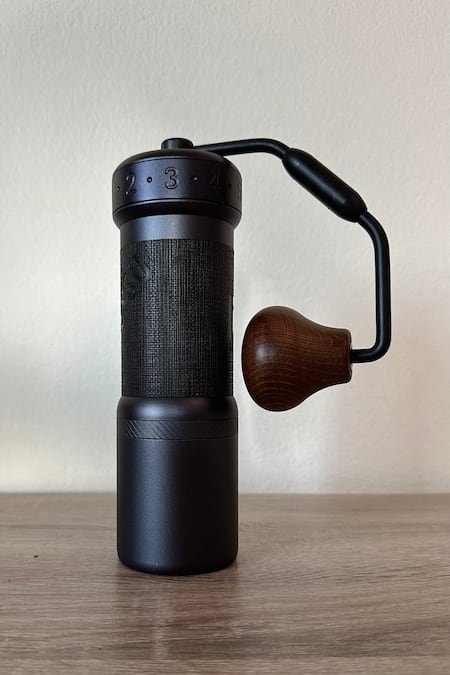
The 1Zpresso K-Ultra is the newest flagship model from the Taiwanese brand.
Yes, it’s a bit more expensive than my other favorite, the J, but you do get some very convenient upgrades for the money.
First and foremost, you get a very convenient external adjustment of the grind size. This makes it very easy to switch between drip coffee, espresso & French press.
The second obvious advantage is that it has a magnetic catch cup. It seems like a small thing, but it makes the whole user experience a bit more frictionless every time you use the grinder.
What about the flavor? Is it also better than the J?
Yes, I believe it is.
You might not be able to detect it unless you’re a skilled coffee taster, but I think that it’s especially noticeable at high extractions or when brewing lighter roasts. The flavor clarity and fidelity is just amplified a notch. If you’re brewing darker roasts at lower extractions, it’s harder to notice any difference, though.
The K-Ultra is almost identical to the K Plus and K Max, which I have previously reviewed. However, it has a few small tweaks that makes it more attractive overall.
Read the full explanation here, including a big comparison of all the 1zpresso grinders.
Pros
- IMO, the top performing all-around hand grinder on the market in 2024, if money is no object
- Multipurpose: Excellent for both espresso & filter coffee
- Professional grind quality
6: Timemore Chestnut c2 (filter coffee)
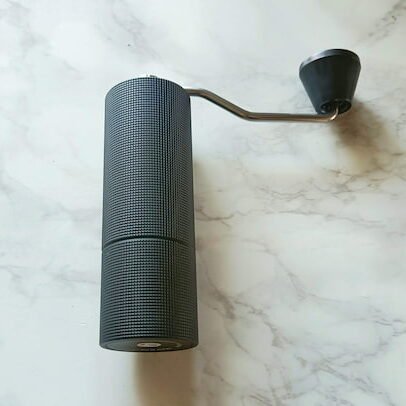
The Timemore C2 is another great hand grinder.
I consider this device to be the cheapest acceptable coffee grinder if you really want to appreciate specialty coffee.
The Timemore C2 has many of the same benefits as the 1Zpresso J. However, it’s actually a bit lighter and easier to hold if you have small hands.
The downside with the C2 is that the capacity is slightly limited at around 25 grams of coffee and that it’s not capable of grinding for espresso.
However, if you’re just looking for a fast, efficient and capable hand grinder to get you started with proper coffee, then go for this model. It’s miles ahead of the traditional hand grinders from Hario, Porlex or JavaPresse.
Read my full review of the C2 here.
(Sidenote: Recently the C3 model was released, but I still think the C2 makes more sense for most people, since it’s more affordable and grinds faster.)
Pros
- Affordable
- Great for travel
- Fast for a manual coffee grinder
- A good place to start your coffee journey
7: Femobook A4Z
The Femobook A4Z is a slighly odd grinder, but it has a lot going for it. Initially I viewed it as a travel grinder, but it actually works great as a daily driver.
The battery-powered design might seem like an odd choice, but it brings some advantages – no cord clutter, flexible placement, and significantly quieter operation than typical plug-in grinders. You might expect battery life to be an issue, but it’s not – one charge lasts months of regular use.
Equipped with the same burrs as the 1Zpresso ZP6, it’s got to be the best electric conical filter grinder I’ve tried. The clarity in filter coffee is exceptional. However, these burrs are really only suited for light roasts with inherent sweetness and fruity notes. If you’re into chocolatey, nutty coffees that are closer to medium, then look elsewhere. This is for coffee snobs who buy from the likes of Sey and Coffee Collective. If you don’t know those roasters, you’re not the target audience.
Design-wise, it’s clean and simple – matte black finish, understated branding, and a magnetic catch cup. Operation is just an on/off button and you got USB-C charging.
The adjustment mechanism’s 8.8 µm increments are arguably a overkill for a filter-focused grinder, making it tricky to track your settings. But you’ll probably just leave it in a pretty narrow range given it’s filter-focused nature.
The conical burr design means you avoid the alignment hassles of flat burr grinders like the Timemore 064S – it’s genuinely plug-and-play. While you might not get the same highs as with premium flat burrs, the trade-off for consistency and simplicity is worth it for many.
Two features would make it even better: variable RPM (currently it runs at hand-grinding speed) and swappable burr sets. But even without these, it’s a cool option for the minimalist coffee enthusiast who wants great light roast coffee without the fuss.
In my opinion, the least fussy and most livable of all the high clarity burr grinders.
OFfficial shop8: Fellow Ode Gen 2 (Filter Coffee)

The Fellow Ode grinder had a few beginner problems during its first year or two on the market.
However, Fellow has managed to fix most (if not all) of the points of criticism, and the Gen 2 version of the grinder appears to be the new king of brew grinders.
If you’re looking for an electric grinder that can do everything except espresso and Turkish really well, then this one should be at the top of your list.
The design is eye-catching and unique and the user experience is top-notch.
It’s also possible to switch the burrs to other types, for instance, the models from SSP, which will enable the grinder to go down to the espresso range.
I should mention that this grinder is designed for single-dosing. So this is not the grinder where you just fill the hopper with a whole bag of beans. No, instead, you have to measure out your dose every time. However, this is what all real coffee geeks do anyway, so it shouldn’t be seen as a downside. Just something to keep in mind.
- Beautiful, innovative design
- Made for single-dosing
- Great flavors for drip coffee due to pro-level 64 mm flat burrs
→ Check out my Fellow Ode review
9: Eureka Mignon Specialita (espresso)
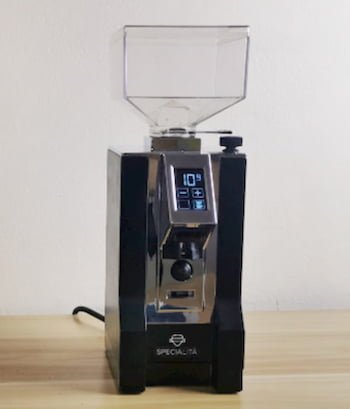
Eureka is an Italian grinder brand that goes all the way back to 1920. Today the company is still handmaking all their grinders in Florence, Italy.
With that kind of history, it’s no surprise that Eureka makes some of the most outstanding grinders on the market today; especially when it comes to serious espresso grinders.
The Eureka Mignon Specialita is the bee’s knee when it comes to espresso grinders. I have had mine for a few years now, and I absolutely adore it.
It’s extremely well constructed, yet still small enough that you can have it on your kitchen counter.
It’s also one of the quietest grinders out there. You can brew a shot without waking up the whole house.
The Specialita also has a precise timing mechanism to 1/10th of a second. This means that you can get an ultra-precise dose each time.
Oh, and then it doesn’t hurt that it looks damn cool.
Amazon Seattle Coffee gear10: Df64 Gen 2 / G-iota (espresso/filter)

The DF64 grinder is probably the most hyped grinder of 2021 and 2022.
Now it’s back with a big upgrade in 2023, and sold as DF64 “Gen 2”.
It’s definitely worth it to get the new model, which comes with some essential upgrades.
It’s a multi-purpose grinder designed for single-dosing. This means that it has a very low amount of ground coffee retained inside the burr chamber. There’s also a set of bellows on the grinder, so you can blow out the remaining grinds. This enables you to switch between beans or brewing styles without worries.
The DF64 has 64 mm flat burrs (hence the name). For that reason, it’s also very easy to install new ones from other manufacturers, if you want to try a different flavor profile. Many users upgrade to SSP burrs right away to achieve that super clean flavor you can only get from a certain kind of professional burr sets.
However, the grinder also tastes quite good with the new and upgraded stock burrs. The flavor profile is especially good for espresso, but it will also do a pretty good pour over.
Previously, the DF64 had some significant issues, but with the new upgrades this grinder finally lives up to its potential. Especially, the declumper has had some issues in the past, but this is all fixed with a new design plus a plasma generator that reduces static electricity to a minimum.
Overall, this grinder checks all the boxes when it comes to filter and espresso. In my humble opinion, this is the ideal choice for the serious hobbyist, who plans to upgrade with SSP burrs. This grinder can even function as a secondary grinder in a small coffee shop.
There’s a lot to be said about this device, so check out my review if you want to know more.
- Designed for single-dosing
- Good for both espresso and pour over
- Sturdy design & powerful motor
11: DF64V: Espresso/filter single doser
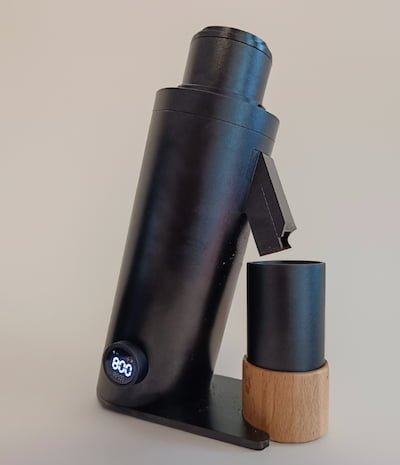
The DF64V is the pricier and more refined sibling of the DF64 Gen 2.
While sharing the same name and the 64 mm flat burr platform, there are a number of tweaks and updates to the DF64V.
The major difference between these grinders is the variable speed that can be controlled from 600-1800 RPM.
In daily use, there are some notable upgrades such as an exceptionally quiet brushless motor and a magnetic chute which simplifies cleaning.
The redesigned burr chamber further reduces retention, making it an excellent grinder for single dosing. It is crafted with high-quality materials.
Taste-wise, the DF64V delivers a nuanced flavor profile for both filter coffee and espresso. Of course, you can upgrade the DF64V to SSP burrs, which will elevate the grinder’s performance to an even more elite level.
Overall, it’s a sleek and good-looking grinder; however, the wood color could better match the body. It’s a minor point.
The DF64V might be the most expensive grinder in this round-up, but its performance is unparalleled at this price point. Essentially, it performs like a Lagom P64 at a fraction of the price.
This is undoubtedly one of the favorite grinders in my collection. If you want a nimble and quiet single-dose grinder suitable for both espresso and filter duties, you can’t go wrong here.
For a deeper exploration of its features, check out the full review.
amazon Miicoffee12: Baratza sette 30 (espresso)

When the Baratza Sette was released a few years back, it was met with extremely high expectations due to its unique and completely revolutionary design.
Suddenly, there was a grinder with almost zero retention, extreme speed, and excellent consistency at a price level suitable for home baristas.
Unfortunately, the grinder turned out to have a lot of bugs and issues – especially the version with the built-in scale was prone to problems.
Now, Baratza has finally managed to get most of these issues under control. Combined with the company’s excellent track record for customer service when something happens, I would no longer be worried about investing in this grinder (this is written with the US market in mind – in countries where there is no Baratza customer support, you should probably consider it twice).
If you want to make great espresso at home without breaking the bank, this is hard to compete with. It only has 30 grind settings, which means that it can be a bit more difficult to dial in compared to the more expensive 270 version. However, the grind size is focused towards espresso and Aeropress, so you have a very fine range.
Pros
- Zero retention grinder
- Fluffy grounds
- Very attractive price
- Super precise digital timer
→ In-depth look at the Baratza Sette
Grinders that didn’t make the list 😔
The world of grinders is super competitive. Especially, in recent years there has been a lot of development in this space.
For that reason some grinders that were considered awesome in 2020 could already be dated less than a year later.
For full transparency, I’m including the list of grinders that were considered for this article, but in the end didn’t make the cut.
If you have some questions about some of these burr grinders then make sure to take a look below.
I have listed the models from cheaper to more expensive:
Cuisinart DBM-8 Supreme Grind
This was one of my first grinders, when I got into coffee. It’s often recommended for beginners. Considering its budget-friendly price the Cuisinart DBM-8 is not horrible, and it looks cute. But it’s very inconsistent, and you will not be able to extract intense flavors with this model. Spend a bit more, and get something way better.
Bodum Bistro
I have recently tested the Bodum Bistro, but I wasn’t very impressed. The particle distribution is below mediocre; especially when it comes to coarse grinds. The Bodum burr grinder looks unique and has a nice glass catch cup, but besides that doesn’t really stand out.
Xeoleo Ghost Burr Grinder
It can’t grind fine due to its unique ghost teeth burrs. Also, for some reason, the pour over coffee just doesn’t taste as great as one would expect (the particles do look very uniform).
I think it’s an interesting grinder with some potential, but I quickly gave up on it. Most likely you’ll have to buy it on a Chinese marketplace, which also means that you run some risks when it comes to warranty and import fees.
Breville Smart Grinder Pro
Breville’s top model is actually quite cool in some ways, but it has an unforgiveable flaw: the impeller tends to wear out after one or two years. This causes the grind chamber to get clogged. Breville doesn’t sell a replacement, so frustrated consumers have had to create their own with a crowdsourced design. Also, for the price, it’s only mediocre when it comes to both pour over and espresso
Baratza Virtuoso Plus
It’s an excellent grinder (also among the best grinders according to the Wirecutter), but you pay a lot of extra money for the timer-feature, which I doubt many people really appreciate. You can buy the M2 burr separately and install it in the Baratza Encore for similar results at a cheaper price point.
Wilfa Uniform
The Wilfa Uniform is a cool grinder in many ways. I have made many nice cups of coffee with mine. The main issue is that it’s only sold in Europe and not available in 110V, making it useless in large parts of the world. Is it worth taking the risk and using it outside its warranty-covered geographical zone? No, I don’t think so.
But if you’re in Europe, this grinder should be on your radar. Some people, myself included, have also upgraded it with SSP burrs, but I think the DF64 is a better grinder for modding since it has way more powerful motor.
Comandante C40
Excellent grind consistency and nice design, but a little bit too expensive to be included among my top picks. You can achieve similar results with cheaper models. Check out my Comandante review for all the details.
Why Should you get a serious coffee grinder?
There are a lot of myths and misconceptions when it comes to the burrs themselves.
However, they are simple and straightforward tools that should be understood in relation to their job: Grinding stuff to a rather uniform size (be it coffee beans, grains, nuts or other food items. )
When it comes to coffee it’s extremely important that the particle size distribution is rather narrow. This helps to get an even extraction of the beans.
Typically, the grind size distribution will be anwhere from 0.1 to 1600 μm (particle diameter) — the trick is to have the majority of the particulates at a range fitting your chosen brew method.
⚠️ beware of BLADE GRINDERS
If you have found this page, you probably already know that a burr grinder is the thing to look for. But let me reiterate for everybody’s sake:
Blade coffee grinders should only be used for chopping nuts – never coffee beans!
With a blade grinder it will be impossible to achieve a consistent grind. The diameter of the particles will range from dust to chunky boulders.
Particles at the two oppisite extremes of the spectrum are typically called ‘fines‘ and ‘boulders’. To a true coffee geek these are like geen kryptonite — you want to avoid them at all cost!
Fines contribute with bitterness, and boulders bring sourness to the final cup.
Conical burrs vs flat burrs
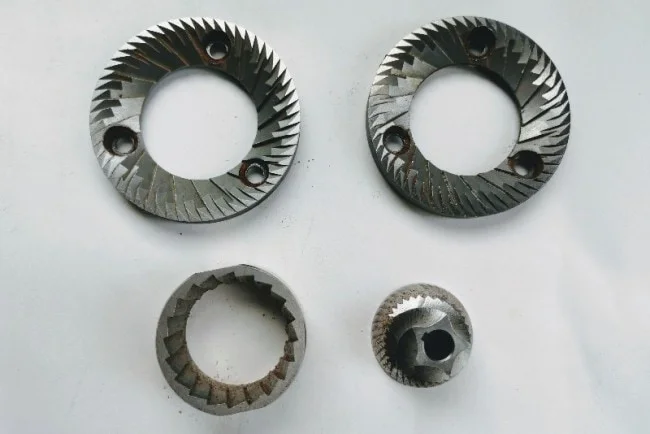
As other tools, burrs can have different shapes and be made from different materials. However, it’s hard to generalize and say that one size, shape or material is superior to the other. It all depends on the use case and the individual manufacturer.
As a general rule of thumb we do see more flat burrs in professional equipment but that doesn’t mean that they are more desirable tastewise.
They are just better suited for high volume. Also, they typically produce fewer boulders (big chunks) compared to the conical ones. But both types of burrs have their own pros & cons:
- Conical burrs: Common in entry-level electric grinder as well as hand grinders due to their smaller size.
When it comes to espresso they tend to create a grind with better mouthfeel. Because they are smaller in diameter, they are typically slower. - Flat burrs: Often used in the big, professional espresso grinders. They are fast and efficient but retain more grounds and can be harder to dial in.
Read more about flat and conical burrs here.
Ceramic vs steel burrs
Ceramic burrs are usually cheaper than steel. They are often utilized in manual grinders in the sub $100 category.

In general they tend to be more dull than their steel counterparts. When used in manual grinders, it means that you have to do a lot of extra work using your biceps.
Ceramic burrs are rarely used in electric grinders; the main reason is probably that they are more fragile than steel and could shatter when getting in contact with a small stone that had gotten mixed up with the beans.
That being said, some manufacturers do use ceramic in their espresso grinders – most famous is probably the Baratza Vario.
One good things about ceramic, however, is that the material is rust resistant and stainless, unlike most steel used in budget grinders.
But overall, I think it’s fair to say that in 2021 the time for cheap ceramic burrs is over. Go for steel instead, and your life will be lot easier.
How to Clean a Burr Grinder?
I’m glad you asked about that question. I have an article here where I talk about how often you should clean a grinder and what you should be aware of.
References:
- James Freeman et al, Blue Bottle Craft of Coffee – 2012 Oct
- Colin Harmon: What I Know About Running Coffee Shops (2017)
- Erol Uman et al: The effect of bean origin and temperature on grinding roasted coffee (2016)

